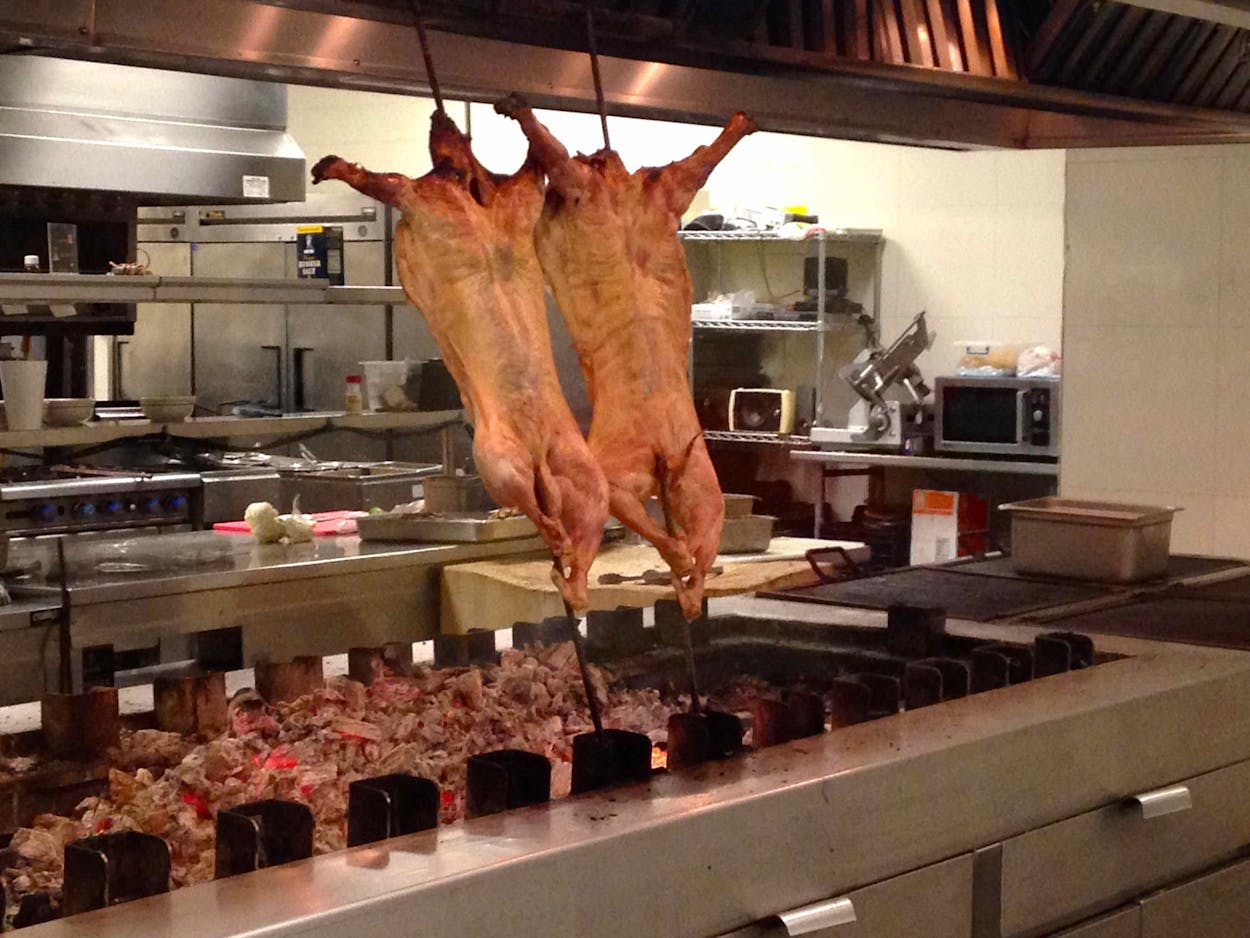For most people, cabrito, or goat meat, might not elicit great food memories. The dish is often dismissed as stringy or “gamey,” and because so few places serve it, most aren’t sure what to expect when they order it. Of course, nearly every major city around the state has a few places that serve it, and try to do it well—Javier’s in Dallas serves cabrito fajitas, as does nearby El Ranchito (and they do the meat a greater justice), and Houstonians can gawk at split cabritos splayed on metal spikes at El Hidalguense where they are angled over an open fire to slowly roast. But nothing compares to the cabrito served in South Texas, which is the best I’ve ever eaten.
All cabrito is goat, but not all goat is cabrito. Cabrito is the veal of the goat world. A goat is milk-fed and slaughtered young, usually around a month old. “Once they’ve eaten grass, it’s not cabrito,” Kiko Guerra told me at the Linn-San Manuel Cook-Off, an event I attended just north of McAllen. Keeping them on their mother’s milk ensures more tender meat as well, but it comes at a price.
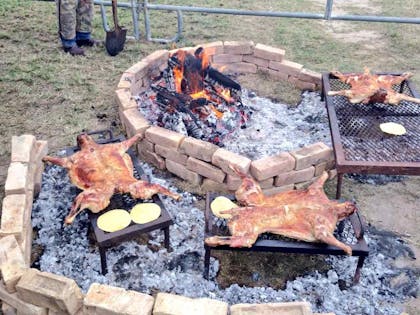
I spoke with Gilbert Garza who owns Arturo’s in Weslaco about the current cost of true cabrito. He gets his from Sysco for $85 per animal. They average about eight pounds, so that works out to roughly $10 per pound. Garza lamented that the original Arturo’s location, run by his family in Mexico, gets cabrito for half that amount. He has to charge $30 for a serving, and there are eight servings on each animal. At Arturo’s they separate the whole carcasses into the individual servings before slow cooking them over moist heat in a covered steel pot. They are then simply seasoned with salt and pepper and finished to order on the flat top with a little oil to crisp up. As recommended by our server, we ordered a shoulder. The dish was golden like a good order of hash browns, and the crust was shatteringly crisp. The meat beneath wasn’t the least bit gamey. It was also wonderfully moist and just the right amount of greasy. There were tortillas and salsas served alongside, but we just dug into the shoulder with our fork until it was reduced to bone. It was an unexpected eating pleasure, but it can’t be considered barbecue. There’s just no fire involved.
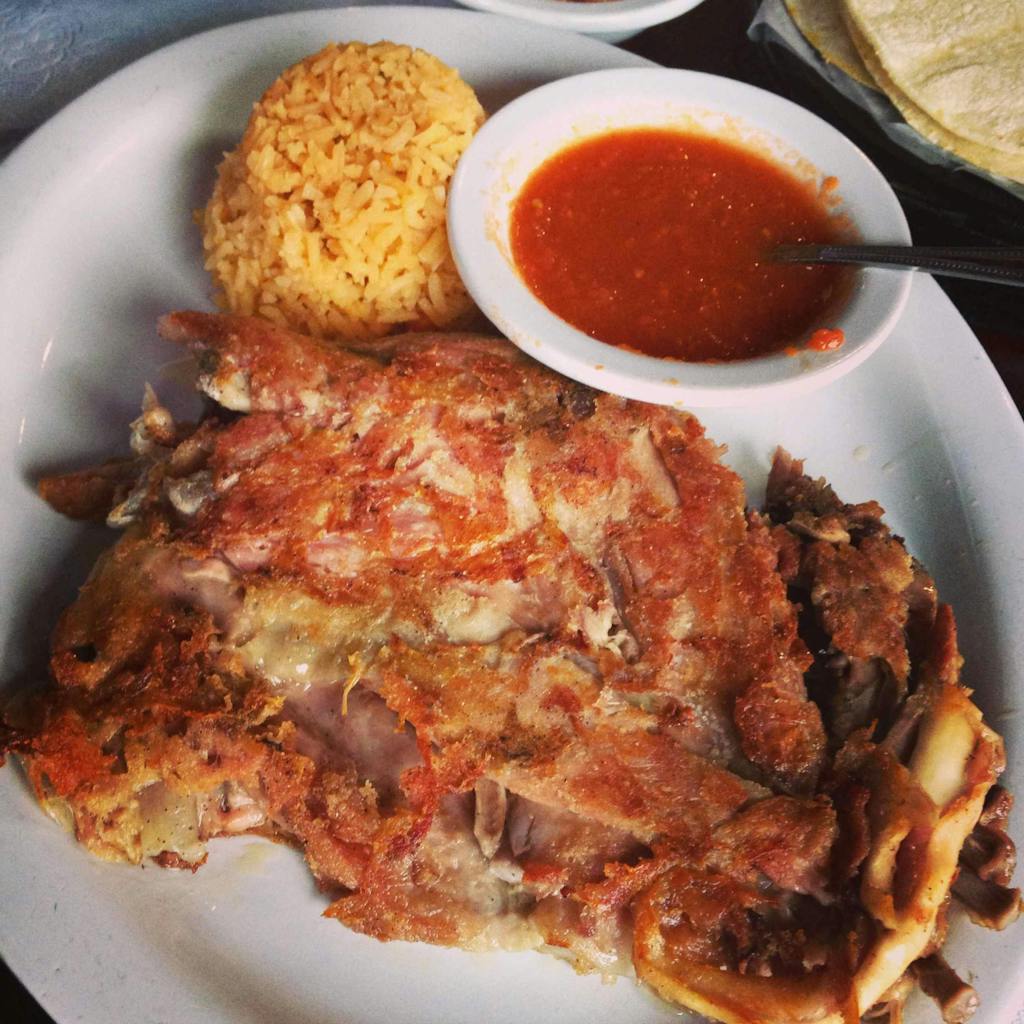
I’ve met a number of pitmasters in the state, mainly from the Hill Country, that tell me their specialty is cabrito, but chances are you’ll never try theirs. When I asked Keith Keese of Keese’s Bar-B-Que in Medina for a taste, he laughed. As mentioned before, raw cabrito is expensive. To make any money he would have to charge $20 or $25 per pound, and his regular clientele isn’t prepared to pay when brisket can be had for half that. The only barbecue joint where I’ve found it regularly is at Cooper’s in Mason. They charge $18.99 per pound (during last year’s visit) and it’s mostly for bone. It’s also probably not cabrito since they list it as “goat” on the menu. A better option is their excellent goat sausage. The point is that barbecue joints aren’t great places to find cabrito because it’s rarely on the menu.
Charcoal is the fuel of choice at La Fogata in Mission. A large picture window looks into the kitchen where cabritos roast slowly over a heap of glowing charcoal. It seemed a peculiar backdrop from the decked out dining room filled with white tablecloth covered tables surrounded by well heeled customers drinking ten dollar margaritas, but it got me hungry. We asked for a shoulder here as well for comparison’s sake. The smokiness was more pronounced, but it was a bit drier than Arturo’s and without that incredible crust.

I had been traveling around the Valley with McAllen native Troy Gearhart. When he was growing up it was common to go to Mexico for cabrito like you can get at Arturo’s and La Fogata, but these days few South Texans cross the border for entertainment and dining. Arturo’s, which hails from Nuevo Progreso, Mexico, opened in Weslaco in 2009 while Reynosa’s La Fogata expanded into Mission two years ago. The decision of these restaurants to come to their customers in Texas is a bittersweet benefit of the troubling situation in Mexico, but Hidalgo County has become the benefactor by way of renewed development. Besides a few new local restaurants, Forbes named McAllen the second best city in the country for potential job growth back in August. If the trend continues, Arturo’s might need yet another location.
That night in McAllen, we had no business seeking out more to eat, but Troy wanted to show me the Centennial Club. The historic brick building has been restored into a jazz-era club. There’s lots of dark wood and bow ties. I enjoyed a sazerac made with duck fat infused rye while we waited for the chef to prepare a few tasting courses. We got more than we bargained for as huge prawns, foie gras topped tenderloin and fried oysters with mole sauce made their way to the table. Those were all great, but it was the main event that was most stunning. A small portion of cabrito head barbacoa had been chopped and placed atop a sweet camp bread and foie gras cream was poured over top. It was certainly the richest of the cabrito dishes we had that day, and also the most memorable.
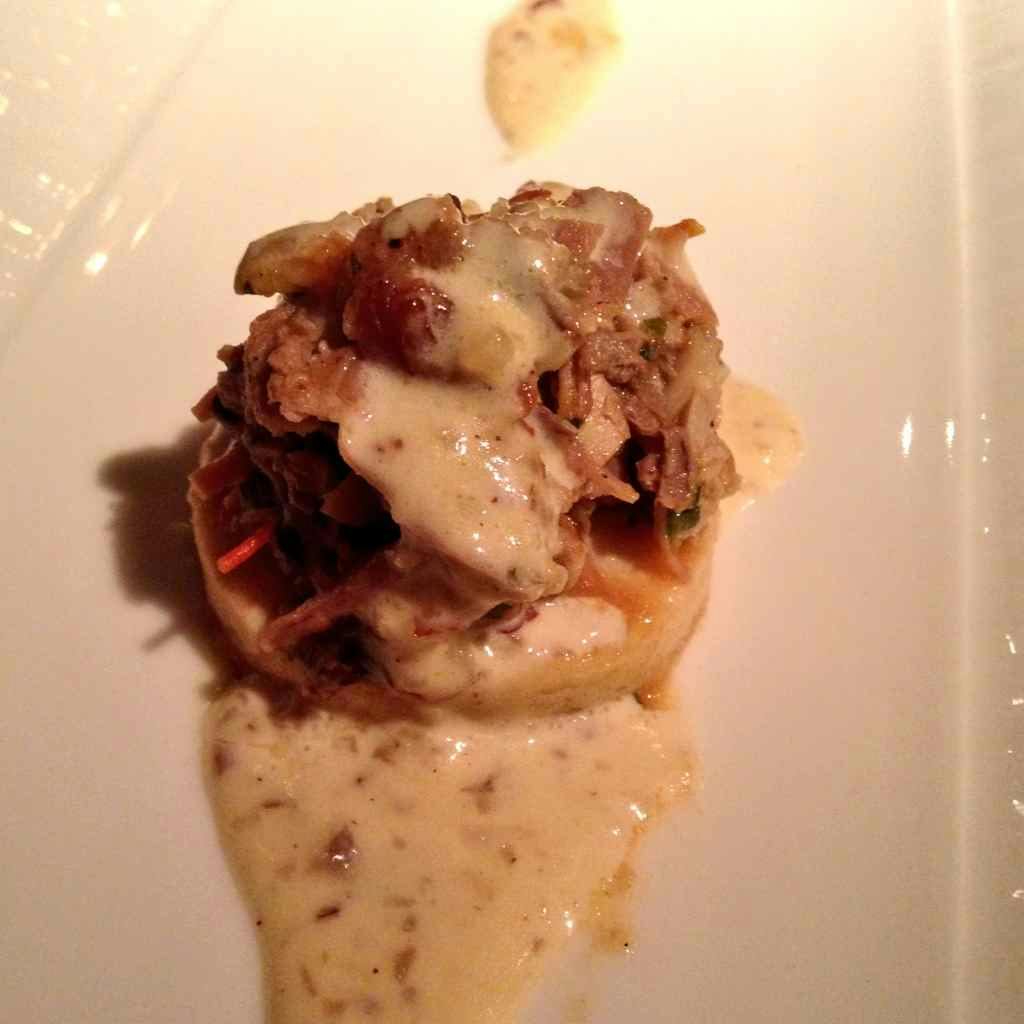
North of McAllen is the small community of Linn-San Manuel. In this ranching area smack dab in the center of Hidalgo County they hold the annual Linn-San Manuel barbecue cook off. A huge American flag flying from atop an extended ladder truck from the local fire department marked the grounds well. The event includes a live auction and plenty of food for purchase, and all the proceeds benefit the local church, the fire department, and funds scholarships for local students.
When the cook off event began back in 1983, the competition categories were limited to fajitas, pan de campo and tamales. Thirty years later, the tamales are gone, and competition board member Fred Cappadona said the competitors have lobbied to add a number of new categories. Pork and beef ribs are now included along with carne guisada and cabrito. I checked in too late at the judges’ table for a spot at the cabrito table, but I got to sample a few of the leftovers that were admittedly not at their height after having sat uncovered for twenty minutes. None compared to what I got fresh from Kiko Guerra’s chopping block.
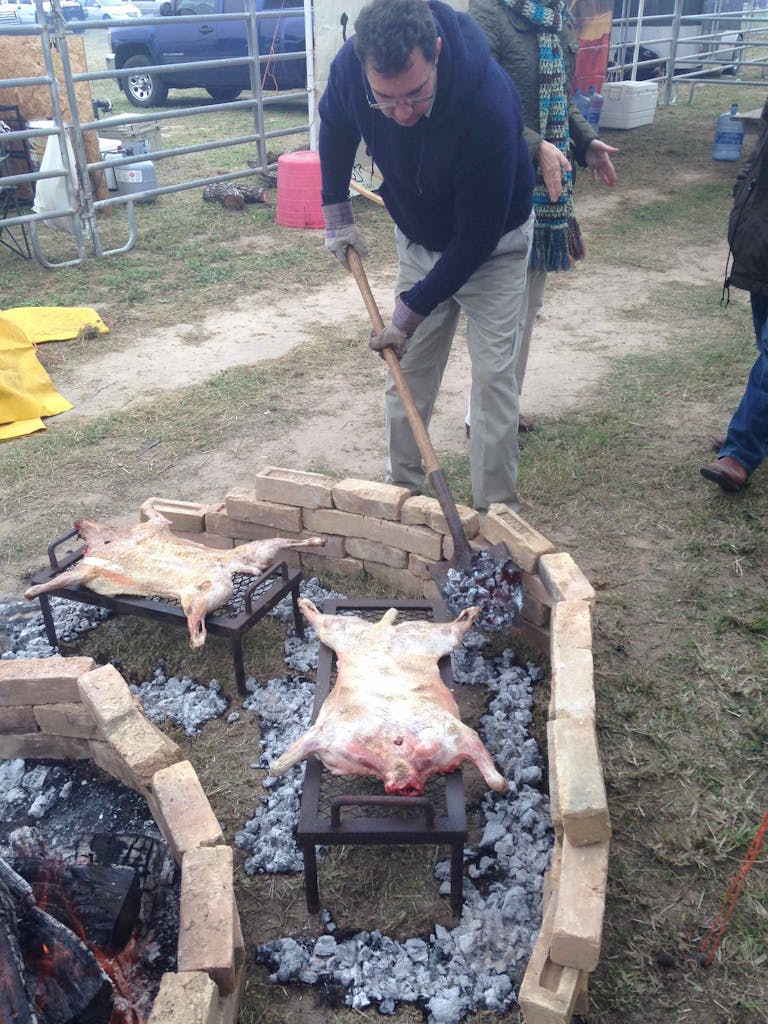
While most of the competitors were using offset smokers for their cabrito entries, Kiko had several steel frames that sat about a foot off the ground. When I arrived at 9:30 a.m., the cabritos had just gone on and Kiko was spreading coals from mesquite that he had burnt down around the perimeter of the carcasses. He said the key was to use low indirect heat for the bulk of the cooking time, and to wait until the end to crisp it up with a blast of heat from coals placed directly under the cabrito. I scanned the rest of the grounds looking for similar set-ups, but there were none to be found. A few teams lifted the lids of their smokers so I could take a peek while others grilled their cabritos completely encased in aluminum foil. I found myself returning to Kiko’s fire for warmth – it was in the forties – and to watch the transformation of the meat from pink to beige to bronze.
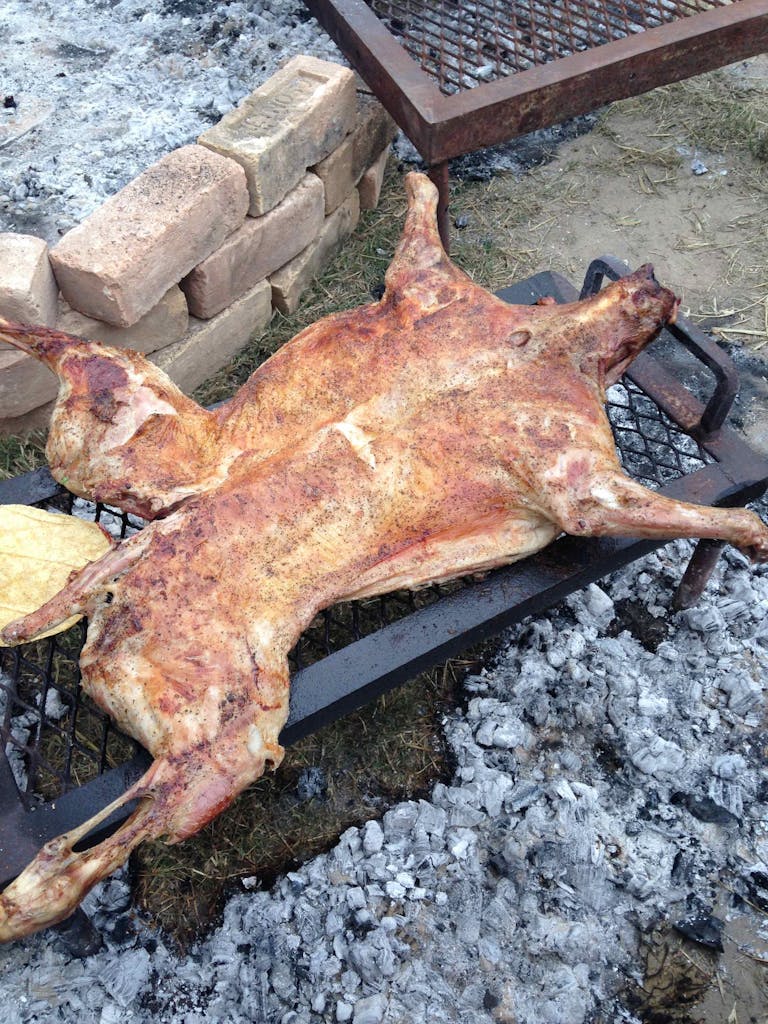
Before the judging started there were a few snacks of thick, warm pan de campo straight out of the Dutch oven and topped with butter and honey. Now, that’s a breakfast. I had to stop since I was about to fill up on a dozen entries for carne guisada. These rich stews of beef, pepper, onions, tomatoes, and spices were all solid minus one entry that all the judges around the table agreed was made with freezer-burnt meat. Next up was the pork rib category, which highlighted everything wrong with competition pork ribs – sweet, sweet, sauce and a little more sugar just in case. The Open division, which Fred Cappadona insisted I judge along with him, was a dizzying array of beef tenderloin and lobster tails. The table was full of impressive entries, but I really just wanted another taste of cabrito. After snacking a bit on those abandoned cabrito leftovers from another judging table, I hurried outside to buy some of Kiko’s.
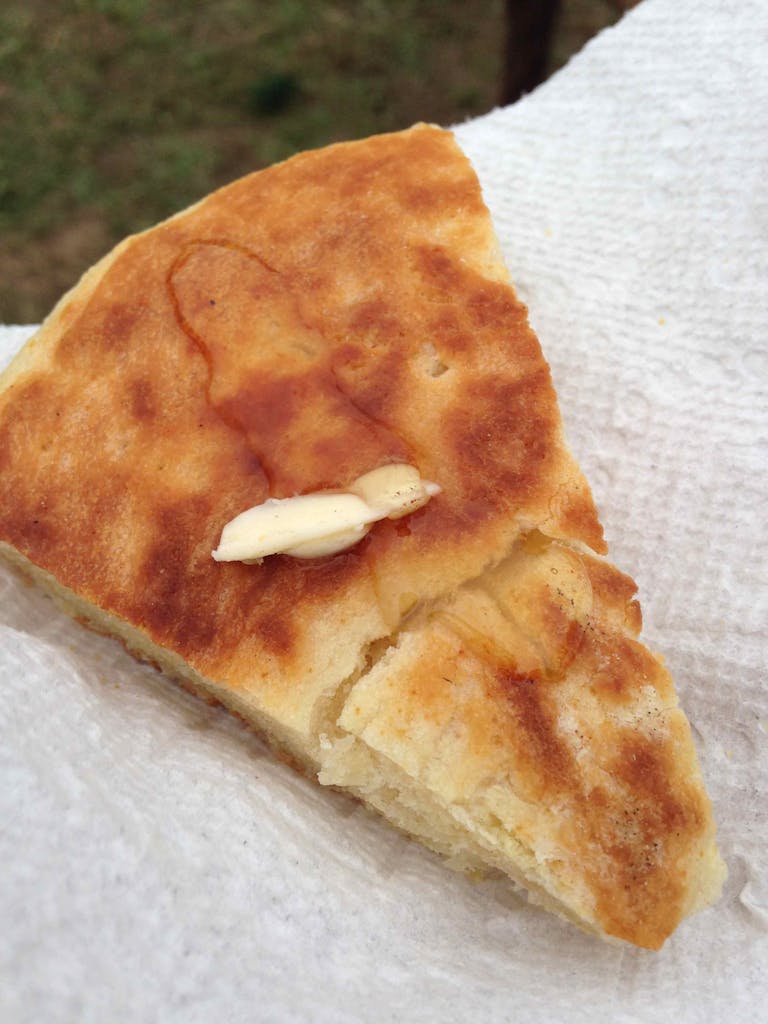
The cabrito from Kiko’s outdoor kitchen had been seasoned, crisped, and roughly chopped when I returned to the warmth of the mesquite fire. I was stuffed from three categories of judging, but I grabbed a bowl and begged for a fresh bite. Kiko suggested a chunk from the kidney area. This cut is sometimes called the riñonada and it includes a little of the leg, the ribs, some loin and the tiny kidneys still dangling. Full or not, I savored every bite. The meat was juicy and salty, and the texture of the exterior was crunchy with a distinct flavor from the coals it was cooked over. This was how I wanted every bite of cabrito to taste from that point forward.
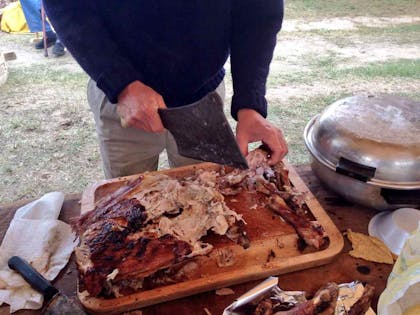
I’ve long ago been ruined on brisket. After sampling so much of it across the state, only the best makes a positive impression anymore. There’s just no point in wasting stomach space on an average version. Up until this weekend in the Valley I would have been happy with just about any average cabrito out there. Now, for better or worse, I’ve been forever ruined for cabrito at the Linn-San Manuel cook off. I guess I’ll just have to return next year.


